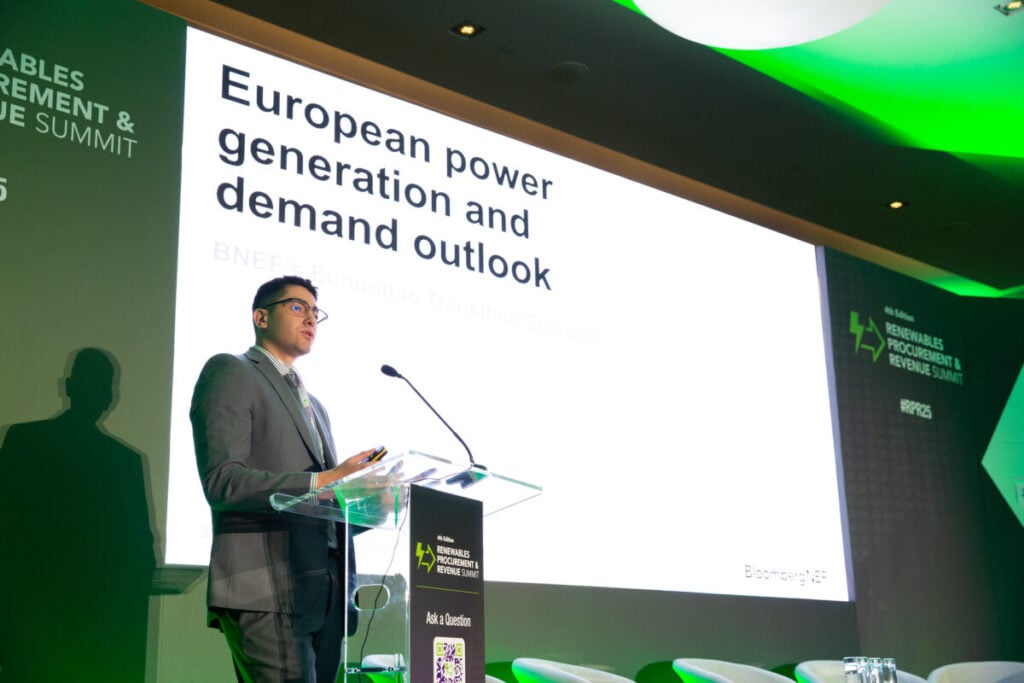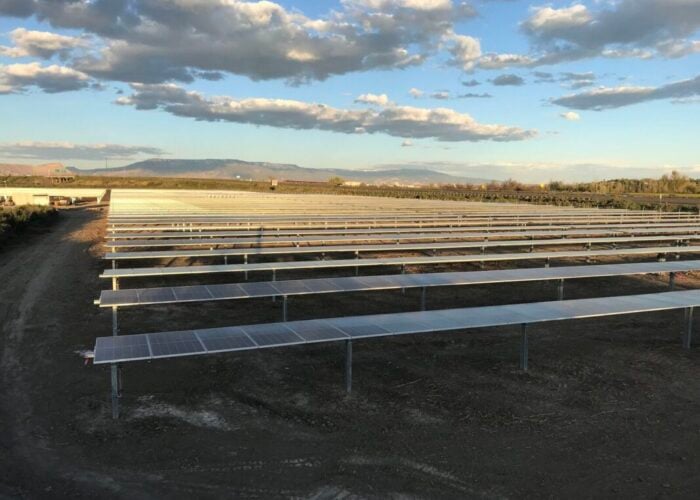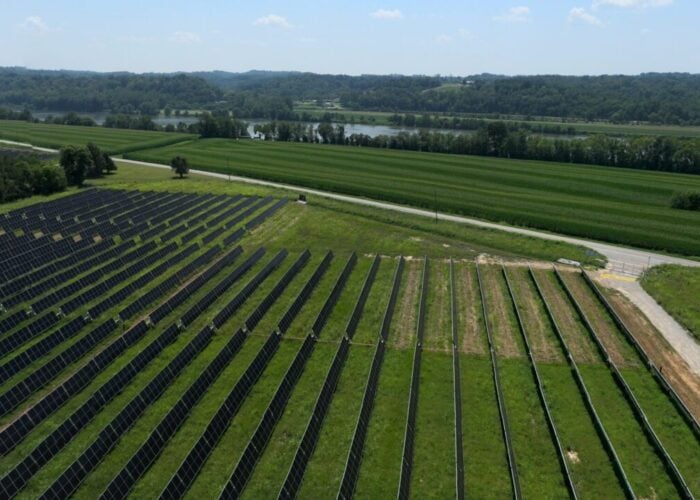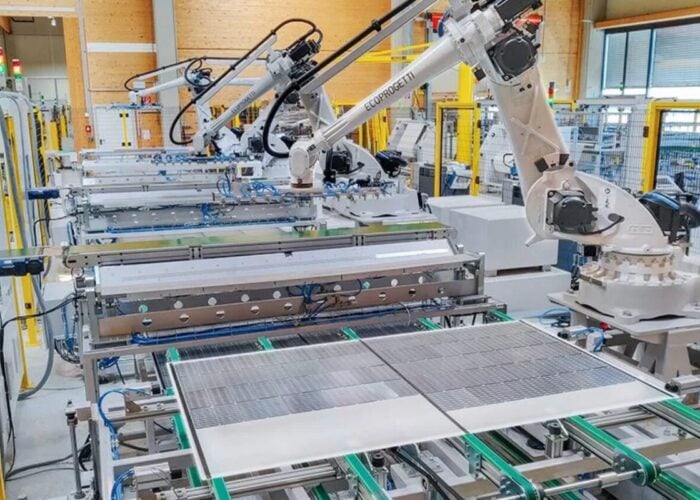
At this year’s Renewables Procurement & Revenue Summit, hosted in London in May by PV Tech publisher Solar Media, much was made of the role that the power purchase agreement (PPA) has come to play in the European renewables sector.
Most notably, attendees described renewable PPAs as important market mechanisms that have become a “cornerstone” of the clean energy transition, but ones that are in need of greater refinement as the European renewable power sector becomes more complex, and the sheer volume of capital entering and moving around the continent grows.
Try Premium for just $1
- Full premium access for the first month at only $1
- Converts to an annual rate after 30 days unless cancelled
- Cancel anytime during the trial period
Premium Benefits
- Expert industry analysis and interviews
- Digital access to PV Tech Power journal
- Exclusive event discounts
Or get the full Premium subscription right away
Or continue reading this article for free
The growing role of PPAs has been demonstrated by figures published before this year’s procurement summit. According to Pexapark, Europe announced offtake deals for 1.6GW and 1.4GW of renewable capacity in March and April, respectively, with Europe contracting more than double the renewable power capacity in March than in the previous month.
However, the price of these deals has fluctuated more dramatically. Pexapark reports that its EURO Composite, an average of the prices secured for PPAs signed in Europe, fell 1.6% between March and April this year, with significant month-on-month price declines of 6.8% in Poland, 2.6% in Belgium and 2.2% in Germany.
Yet these price fluctuations do not necessarily represent a broader decline in the PPA space, nor a diminishment of the value of renewable power in the European energy mix. Instead, they reflect what Nahel Brihi, corporate sustainability analyst at Bloomberg, told PV Tech Premium at this year’s Renewables Procurement & Revenue Summit was an increasing interest in signing PPAs for smaller capacities of renewable power, and for lower prices, with deals more tailored to the markets in which they are signed.
“I think as the sector evolves, PPAs will inevitably evolve with them, and then it becomes that challenge of how to develop [PPAs] and communicate them effectively to buyers so they can negotiate or share the risk,” explained Brihi. “PPAs will change as the macro environment changes.”
European PPA trends
When asked about this shift towards more tailored PPAs, Brihi added that he has seen more complex and nuanced deals signed, both in the global renewable sector in general, and European clean power in particular.
“We’re definitely seeing those trends in terms of co-located or hybrid PPAs – by co-located we just mean a mix of technologies – and we see this growing trend, especially in the US, which is the biggest market for green corporate PPAs in general,” he said, noting that Bloomberg tracked 740MW of off-site hybrid deals in Europe in 2024, compared to 17GW in the US.
Still, he noted that European PPAs can be “interesting”, as they seek to combine several financial and policy mechanisms to ensure producers and offtakers alike are comfortable with the terms of their agreement.
“In Europe, for example, what’s quite interesting is that, in the UK, we saw on the first PPA that was blended with a contract for difference (CfD),” Brihi said. “We are seeing more cross-border PPAs in Europe, which is a very good market for these sorts of things.”
The diversity in the types of deal being signed in Europe is reflected in the diversity of companies now involved in the European PPA space. Olivier de Nomazy, head of energy sourcing and market intelligence at French data centre operator DATA4, told PV Tech Premium at this year’s Renewables Procurement & Revenue event that recent fluctuations in power prices had all but obligated DATA4 to involve itself in the PPA space.
“It’s fair to say that three to four years ago, we were nowhere in PPAs, we were just buying electricity from suppliers in a very traditional manner,” said de Nomazy, whose comments are available in full above.
“The volatility of prices has pushed us to reconsider our approach. Besides, we also have very big and growing demands; I think year-on-year our consumption has been growing by a 30% average between 2023 and 2024.”
However, de Nomazy also noted that PPAs, in their current form, are not a perfect means to deliver on the goals of the energy transition in a manner that reliably meets the power demands of offtakers. While speaking on another panel at the event, he pointed to Spain as an example of a country where, despite the financial security of a PPA, the threat of curtailment means that he does not consider pureplay solar offtake agreements viable.
“Spain, for example, right now is the prime example of getting close to saturation when it comes to corporate deals and renewable additions in general,” added Brihi, who pointed to the recent Iberian blackouts as an example of a region’s broader energy environment undermining some of the security that a PPA can offer. “That could prompt both sellers and buyers to maybe take a step back and diversify their portfolios.”
Stability through multi-technology PPAs and battery storage integration
A key tool for diversifying offtake portfolios, and reducing reliance on a single technology type in a single market, is to invest in multi-technology PPAs. Brihi noted that while it is challenging to forecast what hybrid PPAs will look like on a scale as broad as Europe as a whole, he said that he was “really excited” about the future of multi-technology deals in markets across the continent.
“I don’t know what it’s going to look like in Europe,” said Brihi, who noted that “we might see the first nuclear PPA in France, which would be really exciting.
“In Iceland, we’ve seen a large geothermal PPA, but [not] in continental Europe, where geothermal resources are not the same. We might see more hydro PPAs; I know, at some point, there were a few small hydro deals being signed, and that would be really interesting too.”
When asked about battery storage systems, which are often linked to renewable power sources and heralded as a way to limit the uncertainty that can arise from relying on more variable renewable power, de Nomazy was keen to stress that, in his opinion, batteries are useful up to a certain point.
“We see batteries as a very good solution to deliver peak production, and work on demand management sorts of things to support the grid,” de Nomazy said, whose comments are available in full above. “At the level of price that we have in Spain, for example, we cannot consider the batteries are a good way to transform the solar curve into the baseload curve, which is the ideal product that we would like to buy.”
Unsurprisingly, predictability remains the priority for offtakers, with many interested in matching power procurement to baseload, and securing this electricity consistently, rather than investing in a particular technology type. Magdalena Hilgner, head of energy department at Polish telecoms company PLAY, told PV Tech Premium as much during last year’s Large Scale Solar Central Eastern Europe event, and this sentiment was echoed by Karim Rizk, business development manager at TokWise, which provides software and AI models for the renewable energy industry.
“I think the right word would be ‘volatility’,” he said, speaking to PV Tech Premium at the Renewables Procurement & Revenue summit. He went on to suggest that investing in multi-technology PPAs is one way to tackle this volatility, but there are other steps that can be taken, including more nuanced financial mechanisms and the use of AI tools to better manage power purchasing.
“The idea is for every market player to find a way to manage that [volatility],” Rizk said. “On the PPA side, you see a lot of settlement closes now negotiated on how they’re going to handle the negative prices.”
Securing stability through market mechanisms
Brihi also spoke to this idea of using more nuanced financial tools to deliver the kind of stability that offtakers value.
“What’s nice about PPAs is that, essentially, a PPA is a contract between two different parties,” said Brihi. “Right now, what we’re seeing is that there are more elements that keep getting added in the contracting process, which can make things more difficult, but it shows that PPAs evolve.”
When asked about the deals his own company has agreed, de Nozomy pointed to a ten-year PPA signed with Edison Energia to acquire electricity generated at a 148MW project in Italy. The contracted power alone will account for one-tenth of the company’s electricity consumption in its Italian operations, and de Nozomy suggested that the flexibility of both companies involved in the PPA discussions was a key reason for the deal’s completion.
“Edison showed good flexibility, because the deal [includes] ramp-up scenarios so it accompanies our growth expanding the size of the PPA over time: starting slightly small and growing during the six or seven first years of the contract,” said de Nozomy. “They were also integrated with their supply contract in an easy manner.”
According to Rizk, the increasing appetite for PPA deals, and the increasingly close relations between independent power producers (IPPs) supplying this power and the offtakers keen to acquire power in increasingly tailored and specific manners, means that IPPs are starting to resemble energy suppliers.
“At the end of the day it’s a strategic decision for IPPs to move in that direction; it’s not just a one-off thing,” said Rizk, whose comments are available in full above.
“IPPs usually have a view of the next ten, 15 years, and we see that IPPs want to move to being energy suppliers, so that’s the motivation behind [the thinking]: ‘okay, we need to have this kind of capability, and since we have the tools that enable us, we can do that.’
“If you have that kind of capability, you will also have the opportunity to offer more complex products,” he continued, referring once again to increasing PPA complexity in Europe. “You see that PPAs as produced are not as common and offtakers and corporates need complex PPA delivery methods. If you don’t have the capability on how to manage the residual volume you have, or the shortage you have, on the short-term market, you will not be able to offer such products.”
“We need to have a very tailored, very accurate view on every single detail of those PPAs,” agreed de Nozomy, who went on to describe the increasingly close relations between IPPs and offtakers as an “interesting” space, that suggests the future of the European PPA space could be one of close personal relationships and more compelx financial mechanisms.
“Seeing the supplier getting into those PPAs is interesting because, as a supplier, they do monitor our consumption on a daily manner so they can anticipate and understand our needs almost as good as we do,” de Nozomy said. “That’s why working with those guys is quite useful.”






